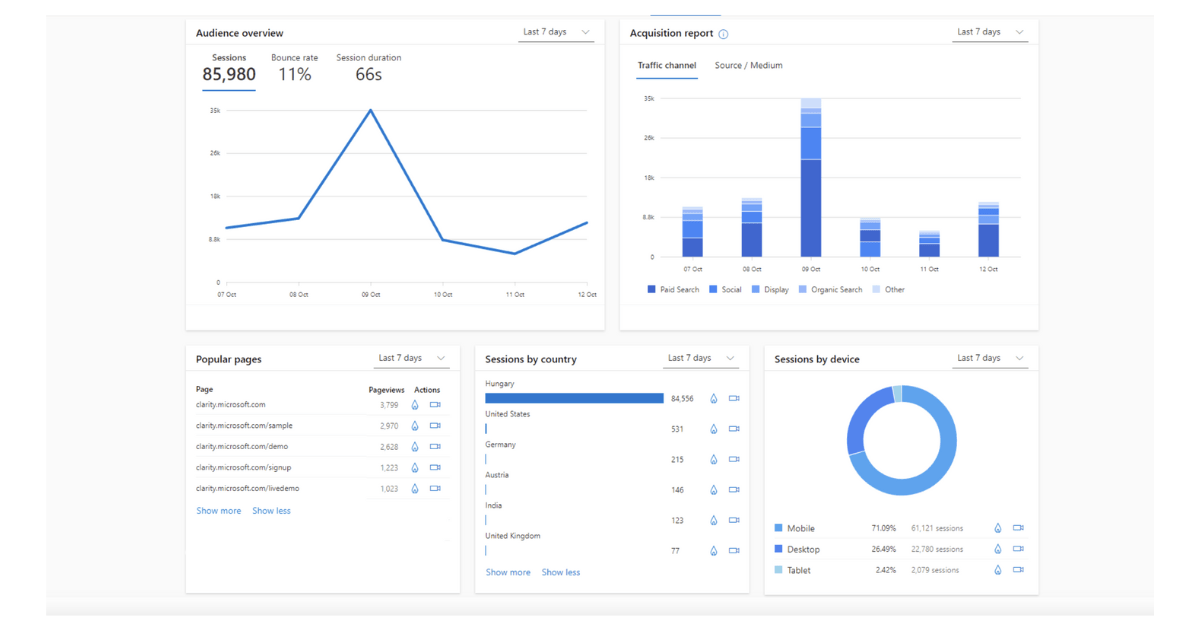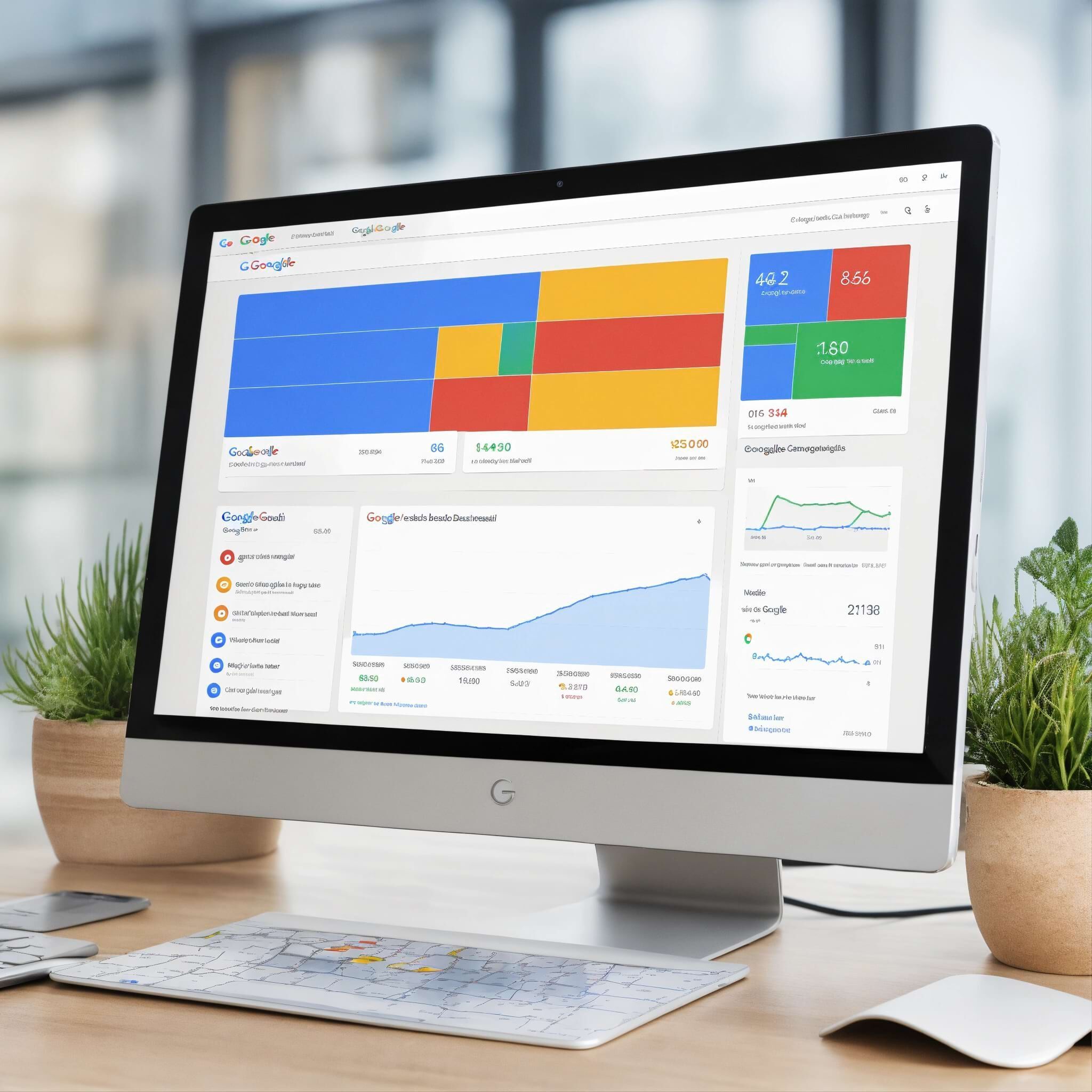Unlock the Secrets of Data-Driven SEO: Transform Your Strategies Today

- Utilize data-driven SEO strategies to align with user intent and adapt to changing algorithms for measurable growth.
- Leverage tools like Google Analytics for monitoring site performance and user engagement to refine SEO efforts.
- Optimize technical SEO via data insights by addressing site speed, mobile responsiveness, and secure connections.
- Enhance local SEO by analyzing user demographics and optimizing Google My Business listings with local keywords.
- Foster better user experience through data analysis by identifying friction points and incorporating user feedback.
Data-driven SEO is reshaping the landscape of digital marketing by focusing on insightful analysis and strategic execution. It's about more than just using keywords; it's an approach that integrates comprehensive data insights to align your digital strategy with audience needs. By leveraging this data, businesses can significantly improve their search engine performance, achieving visibility and meaningful engagement.
Consider the hurdles many businesses encounter: ineffective keyword strategies and low engagement rates. These challenges often stem from a superficial understanding of user intent and behavior. Many businesses pursue broad, generic keywords without delving into what users genuinely need, resulting in missed opportunities. Furthermore, content that fails to connect with its audience often leads to high bounce rates, as users quickly abandon the site in favor of more relevant content.
Achieving visibility is another critical concern. Without a data-driven approach, your website risks being lost in the digital noise. A staggering 95% of search traffic goes to the first page, as noted by WebFX, which makes securing top positions essential for success.
A well-crafted, data-informed strategy ensures that your content not only reaches the right audience but also captivates them, fostering engagement and interaction.
Implementing data-driven SEO involves a deep dive into user data, search trends, and competitive analysis to craft strategies that resonate with user intent. It extends beyond basic keyword optimization, embracing a comprehensive understanding of what drives your audience. This thorough approach can transform your digital marketing efforts, turning ambiguous prospects into precise, actionable insights that achieve tangible results.
Exploring Data-Driven SEO

Data-driven SEO is more than a buzzword—it's a transformative approach that's reshaping how businesses optimize their online presence. Unlike traditional SEO methods that often rely on intuition or outdated tactics, this strategy is grounded in empirical data and actionable insights. But what makes it stand out? It's about employing comprehensive data analysis to develop SEO strategies that genuinely resonate with user intent and behavior.
Imagine your digital strategy as a puzzle. Each piece—be it keywords, content, or backlinks—must fit perfectly to form a coherent picture. Data-driven SEO provides the missing pieces by leveraging tools like Google Analytics and SEMrush to analyze user behavior, identify trends, and uncover competitive advantages. This isn't just about crunching numbers; it's about crafting a narrative that aligns perfectly with what your audience desires.
One of the significant advantages of data-driven SEO is its ability to adapt and evolve with changing algorithms and market conditions. By consistently monitoring data insights, businesses can refine their strategies to maintain high visibility and engagement. This adaptability isn't just theoretical; it's proven by tangible results. For example, an e-commerce business witnessed a 28% increase in organic traffic within six months, driven by higher rankings for newly targeted keywords, as highlighted in Penfriend.ai.
Incorporating data-driven SEO into your strategy means embracing a holistic view. It's about understanding not only where your traffic comes from but why users engage with your content. By aligning your digital efforts with data insights, you can enhance both visibility and engagement, ensuring that your audience finds what they need—and stays for more.
The Role of Google Analytics

Google Analytics is a cornerstone for any data-driven SEO strategy, acting as a window into how users interact with your website. This tool provides invaluable insights into user behavior, traffic sources, and conversion paths, enabling businesses to make informed decisions to enhance their online presence.
By using Google Analytics, you can track a multitude of metrics that showcase how visitors engage with your content. This includes data on user demographics, bounce rates, session durations, and conversion rates. Such detailed information allows you to identify which areas of your site are performing well and which may need some adjustments.
For instance, identifying pages with high bounce rates could indicate that content isn't resonating with your visitors, prompting an opportunity for content optimization. Conversely, understanding which pages drive conversions can help you focus your efforts on replicating that success across other parts of your site.
Moreover, Google Analytics is pivotal in managing and improving technical SEO elements. By analyzing data on site speed, mobile responsiveness, and navigation paths, you can ensure that the user experience is seamless and intuitive. This attention to technical details is crucial for maintaining high search engine rankings and keeping users engaged.
Incorporating Google Analytics into your SEO toolkit transforms raw data into strategic insights, guiding you to craft a user-centered strategy that aligns with both user behavior and search engine expectations. This alignment is key to driving sustainable growth in an increasingly competitive digital landscape.
Your strategy should be built on facts, not assumptions.
Let us turn your data into rankings, traffic, and real results.
Technical SEO and Data Insights

Technical SEO forms the foundation of a successful SEO strategy by optimizing the structural elements of your website. Integrating data insights into technical SEO ensures that your site architecture supports both search engine indexing and optimal user experience. Here's how data can enhance your technical SEO efforts:
Key Elements of Technical SEO:
- Site Speed: Faster loading times improve user experience and reduce bounce rates. Use data to identify slow-loading pages and implement solutions like image compression.
- Mobile Responsiveness: Adapt your site for mobile users, as mobile traffic continues to grow. Ensure your design is responsive by analyzing user device data.
- Secure Connections (HTTPS): Enhance trust and rankings by securing your site with HTTPS. Data insights can show any security issues that may need addressing.
Leveraging Data Insights:
- Site Performance Metrics: Use tools like Google Analytics to monitor load times, bounce rates, and session durations. This data helps pinpoint areas needing improvement.
- Crawl Errors and Indexing: Identify crawl errors and indexing issues. Regularly check for broken links and optimize XML sitemaps to facilitate better search engine indexing.
- User Interaction Data: Analyze how users navigate your site. This can guide adjustments in URL structure or page hierarchy to improve the user journey.
By incorporating data-driven insights into your technical SEO strategy, you create a robust and agile website. This alignment not only enhances search visibility but also improves user satisfaction, ensuring your content effectively reaches its audience.
Leveraging Data for Local SEO

Local SEO plays a pivotal role in helping businesses connect with customers in specific geographical areas. By using data insights, you can refine your local SEO strategy to boost visibility and attract more visitors to your physical locations.
Understanding local audiences begins with analyzing user demographics. Data reveals patterns about who your local customers are, allowing you to tailor content and promotions that resonate effectively. Additionally, examining local search trends helps you align your content with topics and queries of interest in your area, ensuring relevance and engagement.
Optimizing your Google My Business (GMB) listing is crucial in this process. According to a study from Think with Google, 76% of people who search on their smartphones for something nearby visit a business within a day. This highlights the importance of maintaining an up-to-date GMB listing, complete with accurate business details, enticing customer reviews, and high-quality images. Furthermore, incorporating locally relevant keywords based on search volume data can significantly enhance your site’s appearance in local search results.
Enhancing the local user experience is another key aspect of data-driven local SEO. Since many local searches are conducted on smartphones, optimizing for mobile is a must. Analyzing mobile usage data will guide adjustments that ensure a seamless mobile experience. Customer feedback, gathered through reviews and surveys, offers valuable data that can be used to fine-tune services and address any concerns, creating a stronger bond with your local clientele.
By harnessing data-driven insights, your local SEO strategy becomes more targeted and effective, boosting both visibility in search results and connections with your local audience.
Enhancing User Experience with Data
User experience (UX) is a crucial factor in the success of any digital strategy, and data-driven insights can play a transformative role in refining this experience. By focusing on how users interact with your website, you can create a more engaging and satisfying journey for them, ultimately increasing retention and conversions.
To begin with, data analytics provide a window into user behavior on your site. By examining metrics like page views, click-through rates, and time spent on each page, you can identify which elements of your site engage users and which fail to capture their attention. For example, a website redesign for Vital WorkLife led to significant improvements in user experience, showcasing the power of data in driving strategic design decisions.
Additionally, data can reveal friction points in the user journey. High bounce rates or abandoned cart statistics might indicate areas where users encounter difficulties or lose interest. Addressing these issues with targeted changes, such as streamlined navigation or more intuitive page layouts, can enhance overall user satisfaction.
Incorporating user feedback is another critical component. Reviews and surveys can highlight specific areas for improvement from the user's perspective. By integrating this feedback into your design strategy, you ensure that your site evolves in a way that aligns with customer expectations and preferences.
By harnessing data to continually optimize user experience, businesses can foster stronger connections with their audience, reduce churn, and drive meaningful engagement. This ongoing refinement process not only boosts search engine rankings but also enhances customer loyalty and satisfaction.
A Step-by-Step Data-Driven SEO Strategy
Developing a robust data-driven SEO strategy involves a sequence of carefully planned steps that leverage data insights to optimize search engine performance. Here’s a streamlined approach to implementing such a strategy:
Conduct Comprehensive Keyword Research:
- Utilize SEO Tools: Use platforms like SEMrush to identify high-impact keywords that align with your audience’s search intent. Look for keywords that not only drive traffic but also match your content’s relevance.
- Utilize SEO Tools: Use platforms like SEMrush to identify high-impact keywords that align with your audience’s search intent. Look for keywords that not only drive traffic but also match your content’s relevance.
- Analyze Competitive Landscape:
- Competitor Insights: Use data to evaluate your competitors' strengths and weaknesses. Look at their keyword strategies, content performance, and backlink profiles to identify gaps and opportunities.
- Competitor Insights: Use data to evaluate your competitors' strengths and weaknesses. Look at their keyword strategies, content performance, and backlink profiles to identify gaps and opportunities.
- Optimize On-Page SEO:
- Content Alignment: Ensure your content is not only keyword-rich but also aligned with user search intent. Tools like MarketMuse can help assess topic relevance and content depth.
- Technical SEO Checks: Conduct regular audits to ensure your site’s health, including speed, mobile responsiveness, and secure connections.
- Enhance Content Through Data:
- Content Gap Analysis: Identify content gaps compared to competitors and fill these with high-quality, informative articles. Focus on adding unique value and fresh insights that elevate your content's authority.
- Continuous Improvement: Use analytics to track content performance and user engagement, making iterative improvements based on data feedback.
- Leverage Data for Link Building:
- Quality Over Quantity: Prioritize acquiring high-quality backlinks from authoritative sources. Analyze data to identify potential link-building opportunities that align with your content.
- Quality Over Quantity: Prioritize acquiring high-quality backlinks from authoritative sources. Analyze data to identify potential link-building opportunities that align with your content.
- Monitor and Adapt:
- Regular Performance Review: Continuously monitor SEO performance using tools like Google Analytics. Adjust your strategy based on real-time data to align with evolving search trends and algorithm changes.
By systematically following these steps, businesses can craft a data-driven SEO strategy that enhances visibility, aligns with user intent, and drives measurable results. This approach emphasizes the importance of continual adaptation and optimization in an ever-changing digital landscape.
Case Studies and Real-World Examples
Examining real-world applications of data-driven SEO reveals its transformative potential in overcoming challenges and enhancing search visibility. Let's delve into two compelling case studies that exemplify successful implementations.
GenoPalate, a leader in genetic-based personalized nutrition, faced the hurdle of limited search engine visibility, making it difficult to connect with their intended audience. By collaborating with O8, they crafted a comprehensive SEO strategy that included a detailed audit and strategic keyword optimization. This partnership resulted in a remarkable 24.2% growth in organic traffic share and an impressive 1,400% increase in pages per session, demonstrating the effectiveness of a data-driven approach. You can learn more about their success in the GenoPalate case study.
Similarly, RTINGS.com, a product review website, embraced a data-driven strategy by focusing on high-quality content and consistent data analysis. This approach enabled them to achieve 9.5 million monthly search visits, illustrating the power of addressing user needs through comprehensive content. Their story is a testament to how meticulously leveraging data can drive substantial organic traffic. For further insights, visit the RTINGS SEO case study.
These examples highlight the tangible benefits of adopting a data-driven SEO strategy. By capitalizing on data insights, businesses can refine their strategies, overcome obstacles, and achieve measurable growth in visibility and engagement.
FAQ Section
Addressing common questions can clarify the nuances of data-driven SEO and offer deeper insights into optimizing your digital strategy.
How can SEO professionals use data to advocate for resource allocation?
SEO professionals can leverage data analytics to demonstrate the impact of their strategies on traffic, conversions, and revenue. By showcasing metrics like increased organic traffic or improved keyword rankings, they can make a compelling case for allocating more resources toward SEO efforts.
What is the importance of backlink analysis in SEO?
Backlink analysis is crucial for understanding the quality and relevance of links pointing to your website. High-quality backlinks from authoritative sites enhance your domain authority and boost search engine rankings. Regular analysis helps identify toxic links that may harm your SEO efforts and strategize new link-building opportunities.
How does integrating CRM data enhance SEO strategy?
Integrating CRM data with your SEO strategy allows for more personalized content creation. Understanding customer behaviors and preferences helps tailor your content to meet audience demands, thus improving engagement and conversions.
How often should SEO strategies be analyzed?
Regular analysis of SEO strategies—at least quarterly—is essential to adapt to changing algorithms and market trends. Consistent evaluation ensures that your SEO efforts remain effective and aligned with business goals.
How does user engagement data influence SEO strategy?
User engagement data provides insights into how visitors interact with your content. High engagement levels typically correlate with content that aligns with user intent, while low engagement might indicate a need for strategy adjustment to better meet audience needs.
By addressing these questions, you can better understand how data-driven SEO strategies contribute to a more effective and responsive digital presence.
Bringing It All Together: The Power of Data-Driven SEO
In today's digital landscape, leveraging a data-driven SEO strategy is crucial for staying competitive and achieving meaningful growth. By aligning your SEO efforts with detailed data insights, you can optimize your website to not only reach your target audience but also engage them with content that truly resonates. From enhancing user experience to refining local and technical SEO elements, data-driven approaches ensure a robust, adaptable online presence.
Reflecting on the successes of companies like GenoPalate and RTINGS.com, it's clear that data isn't just a tool—it's a transformative force. These companies capitalized on their data insights to navigate the complexities of search algorithms, ultimately achieving significant gains in organic traffic and user engagement.
Ready to see growth like never before?
Talk to an advisor today to uncover the data-driven insights that can enhance your SEO strategy and elevate your online presence.








